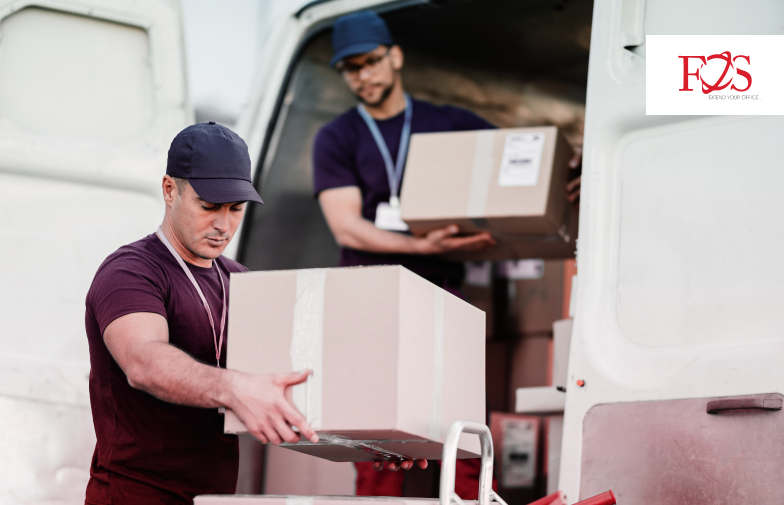If you are in charge of optimizing import/export logistics, you’ve probably faced the pressure of reducing costs while ensuring cargo moves seamlessly through every stage. One of the most overlooked yet critical segments in this supply chain puzzle is drayage. Whether you are handling international shipments or managing tight port timelines, drayage services can be the secret weapon you didn’t know you needed.
Let’s take a look at how specialized drayage might improve your import/export business, both financially and practically.
What is Drayage in Simple Terms?
Drayage refers to the short-distance transportation of freight, especially from a port to a nearby warehouse, rail terminal, or distribution center. While the distance might seem minor, the role it plays is major. If drayage isn’t handled properly, it can result in missed delivery windows, demurrage fees, and customer dissatisfaction.
Why Drayage Matters More Than You Think
Many leaders focus on long-haul transportation, ignoring the first and last legs of cargo movement. But here’s the truth: even the most efficiently planned freight route can fall apart if the first mile from the port is delayed. This is where specialized drayage comes in, offering the speed, compliance, and local know-how that general freight carriers often lack.
Delays at Ports Are Expensive
According to the outside report, port congestion can cost extra per container in demurrage fees if not cleared in time. Specialized drayage providers help you avoid these unnecessary expenses by ensuring that your containers are picked up and moved quickly from the port.
You save money and avoid stressful delays.
Specialized Drayage = Specialized Value
When you work with a specialized drayage service, you’re not just getting a truck and driver. You’re tapping into:
- Experienced port navigators
- Drivers who understand container handling rules
- Real-time tracking systems
- Optimized scheduling aligned with port regulations
That’s a whole layer of control added to your operation.
How Drayage Supports Global Supply Chain Efficiency
Cargo travels via roadways, railroads, and oceans in today’s international trade. In intermodal logistics, drayage serves as the link between these various modalities. Proper documentation at every stage, streamlined warehousing, and delivery obligations are all made possible by smooth drayage movement.
It is a worldwide enabler rather than only a local service.
Financial Benefits: More Than Just Transportation
If you’re a finance manager, you know every minute of delay translates to cost. Drayage services help cut down:
- Demurrage and detention charges
- Fuel wastage due to waiting times
- Labor costs during idle time
On average, companies using managed drayage save 12–15% in port-associated logistics costs annually.
The Role of Logistics BPO Service in Managing Drayage
Now, let’s take it a step further.
From planning pickups to liaising with carriers and port authorities, Logistics BPO Services may handle all aspects of drayage operations on your behalf. With a reliable back-office team in place, you get:
- Accurate documentation
- Real-time updates
- Cost monitoring
- 24/7 visibility
This removes the admin burden from your in-house team, giving you room to focus on strategic decisions.
Compliance Is Non-Negotiable
Drayage providers stay updated on port rules, environmental regulations, and customs compliance. A misstep here can cause cargo holds, penalties, or even legal issues. Having the right drayage partner reduces your legal and financial exposure.
You won’t have to lose sleep over last-minute paperwork or customs violations.
Drayage Enhances Customer Experience
The way the container was transported from the port to the warehouse may not matter to your clients, but they will notice if it is late. Products are in stock, shelves are stocked, and consumer expectations are satisfied when drayage is quick.
In today’s competitive market, logistics are crucial to brand reputation.
You Don’t Need to Own the Trucks to Get Top-Quality Drayage
One of the most common misconceptions is that dependable drayage requires an internal fleet. That is not at all true. You may get scalable capacity, location flexibility, and cost-effective routing with the help of third-party drayage partners and a logistics business process outsourcing (BPO) solution, all without having to own any assets.
Conclusion
Drayage is necessary if you’re serious about enhancing your import/export business. Despite appearing to be a minor link in the chain, it significantly affects customer satisfaction, cost, and timeliness. Additionally, you have complete control over a process that previously seemed disorganized and uncertain when combined with a logistics business process outsourcing solution.
Start viewing drayage as a strategy, not a service. It could be the edge that takes your operations from good to exceptional.
FAQs
1. What’s the difference between drayage and long-haul trucking?
Drayage is the short-distance transportation of goods, typically from a port to a nearby rail hub or warehouse. Large distances between cities or states are covered by long-haul trucking. Drayage is essential for import/export schedules since it is quick, local, and time-sensitive.
2. Can Logistics BPO services really manage drayage effectively?
Absolutely. Logistics BPO providers specialize in managing back-end logistics functions, including drayage coordination. They can handle scheduling, documentation, tracking, and cost analysis, giving your internal team room to focus on core operations.
3. Is specialized drayage worth the cost?
Yes, and here’s why: specialized drayage providers reduce risks, fees, and delays. They’re trained for port conditions, ensuring fast turnarounds and compliance. When you weigh that against the cost of missed deadlines or demurrage, it’s a worthwhile investment.
